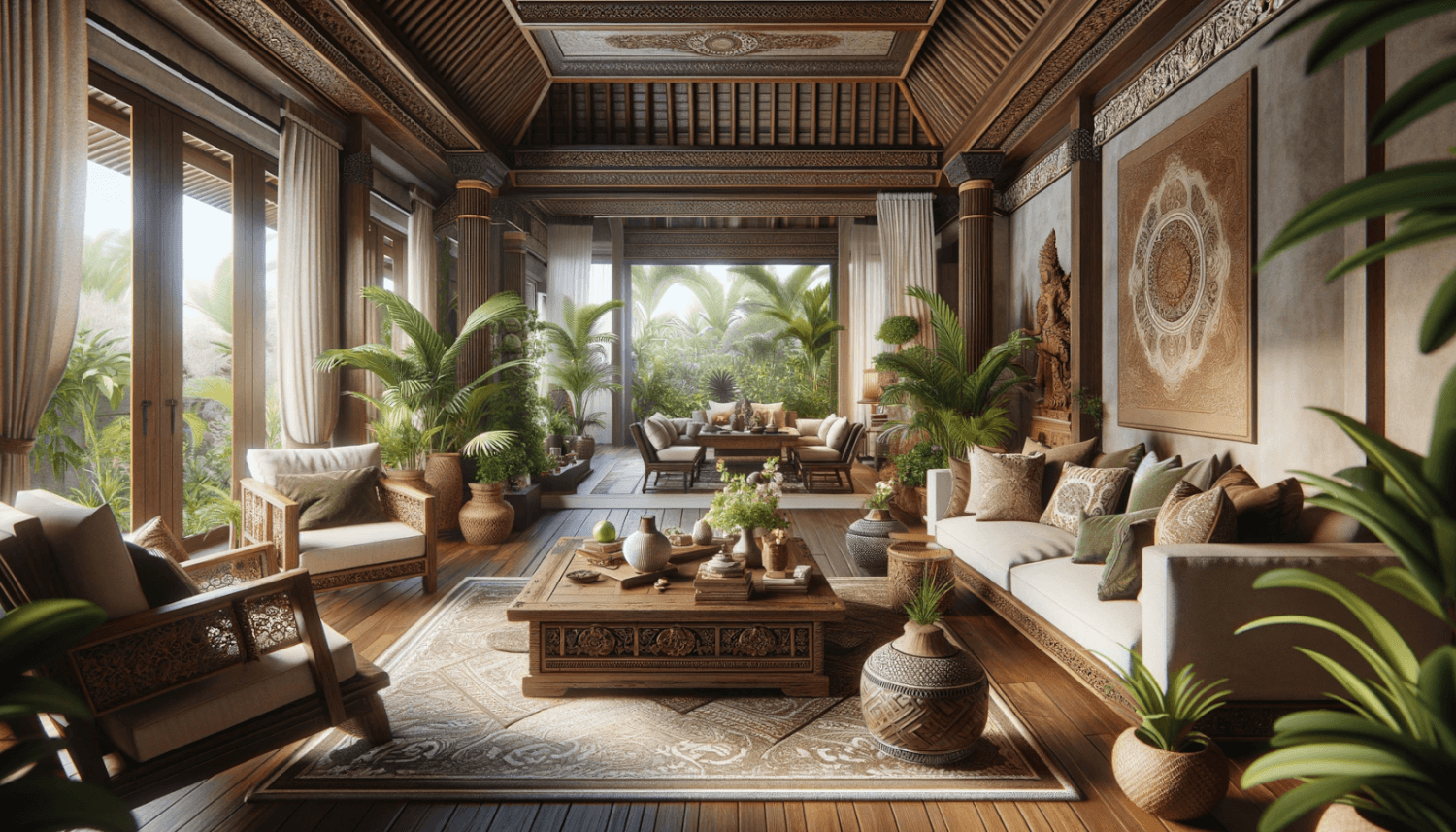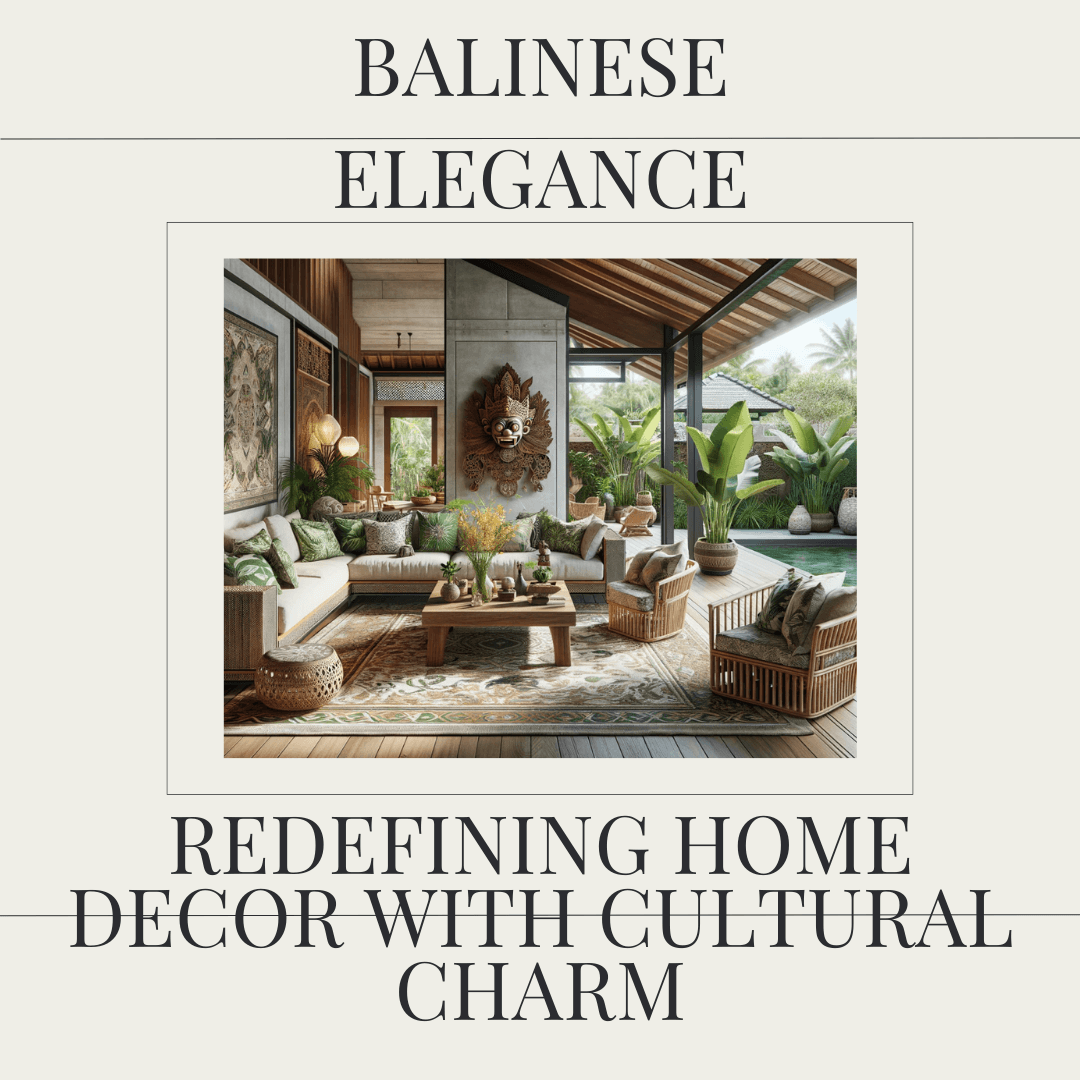Balinese home decor, known for its cultural richness and serene aesthetics, is a testament to the island’s artistic heritage and spiritual essence. This style, characterized by natural elements, intricate carvings, and a harmonious balance with nature, is increasingly sought after in modern homes worldwide. In this article, we delve into the heart of Balinese home decor, exploring its historical roots, key design elements, and the ways in which this style has evolved and adapted to modern tastes.
The History and Evolution of Balinese Home Decor
The Balinese home decor style, deeply rooted in the island’s rich cultural tapestry, has evolved over centuries. Originating from the Indonesian island of Bali, this style is a reflection of the island’s Hindu-Buddhist heritage and its unique blend of indigenous and foreign influences.
Traditional Balinese homes, known as ‘Bale‘, were designed to harmonize with the natural environment, using locally sourced materials like bamboo, thatch, and volcanic stone. Intricate carvings, often depicting Hindu deities and mythological creatures, adorned these structures, reflecting the island’s deep spiritual beliefs.
The arrival of Dutch colonists in the 19th century introduced European architectural styles to Bali, which gradually blended with the local aesthetic. This fusion gave birth to a more eclectic Balinese style, combining traditional elements with colonial features like large windows and high ceilings.
In the 20th century, as Bali became a popular tourist destination, the Balinese style began to gain international recognition. Architects and designers from around the world were drawn to its unique blend of naturalism and spirituality, incorporating these elements into modern designs.
Today, Balinese home decor is celebrated globally for its tranquil and exotic appeal. As the world becomes more interconnected, the Balinese style continues to evolve, merging with various cultural influences while retaining its core principles.
Key Elements of Balinese Decor
- Furniture and Artifacts: Balinese furniture is typically crafted from durable woods like teak and mahogany, featuring detailed carvings that reflect the island’s myths and culture. Complementing these are artifacts such as hand-carved statues, traditional masks, and woven baskets, which serve as both functional items and artistic expressions of Balinese heritage.
- Color Schemes and Textiles: The Balinese color palette is inspired by nature, with earthy tones like greens, browns, and blues. These are enhanced by the vibrant colors of traditional textiles like ikat and batik, used in various decor elements such as throw pillows, curtains, and upholstery. These textiles add texture and pattern, infusing spaces with a distinctive Balinese charm.
- Spiritual Elements: Balinese decor often includes spiritual symbols from the island’s Hindu traditions. Elements like water features, stone sculptures of deities, and incense holders are not only decorative but also contribute to a peaceful and spiritual atmosphere. These elements should be integrated with respect for their cultural significance, enhancing the decor’s tranquility and harmony.
Incorporating Balinese Style into Modern Homes
Integrating the Balinese style into modern homes is a creative process that involves blending traditional elements with contemporary design. This approach allows for the creation of a space that is culturally rich and yet perfectly suited to modern living.
For those who prefer a more streamlined and efficient approach to integrating Balinese style into their homes, platforms like HomeDesigns AI offer a novel solution. Our platform allows you to visualize and experiment with different Balinese elements in your existing space digitally. This innovative approach simplifies the design process of the interior of your house, as well as the exterior.
The Beautiful/Creative Redesign feature is a starting point for those looking to infuse their homes with the essence of Balinese decor. By simply uploading a photo of your space, you can use this feature to visualize how Bali elements like rich wood furniture, vibrant textiles, and spiritual artifacts can harmoniously blend with your current setup.
Precision+ takes the customization further. After getting an initial design idea from the Beautiful/Creative Redesign feature, you can use Precision+ to tweak and refine the details. This could mean the placement of a Balinese-style statue or experimenting with different pieces of furniture. It’s particularly useful for those who have specific design elements in mind and wish to see how they fit into the broader Balinese theme.
The Fill Spaces feature addresses the often-overlooked areas of your home. It suggests appropriate items to fill any empty spaces, ensuring that the Balinese theme flows seamlessly throughout your space. Whether it’s a corner that needs a touch of greenery or a wall that could use a piece of traditional Balinese art, this feature helps in creating a cohesive and immersive Balinese atmosphere.
Conclusion
Embracing Balinese home decor is more than just a design choice; it’s a journey toward creating a space that resonates with tranquility, harmony, and cultural richness. Whether you’re a seasoned designer or a homeowner seeking inspiration, the Balinese style offers endless possibilities to transform your space into a serene and enchanting haven.









